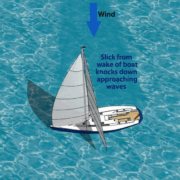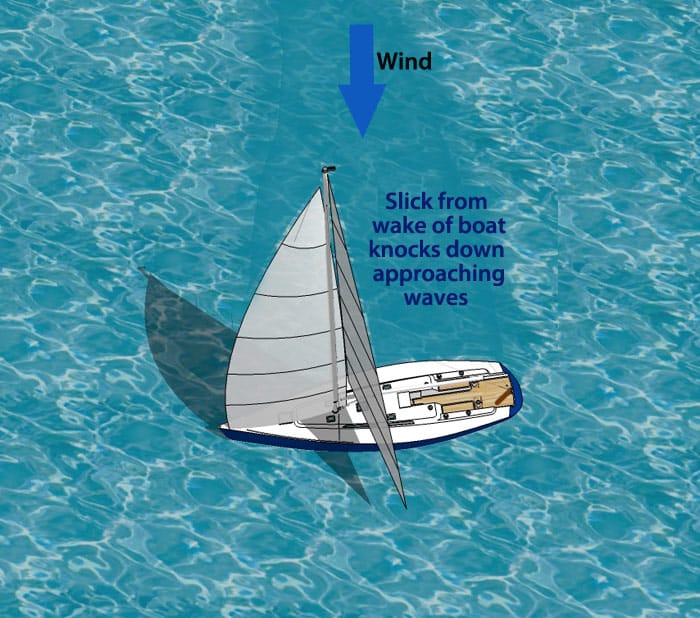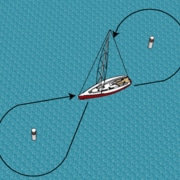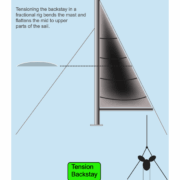Heaving To And Something About It That You Might Not Know
Most sailors already know how to heave to so I’ll give the quick part of this tip up front.
The Quick Bit
When heaving to, and if you have the choice, do it so that your boat is on a starboard tack. This way you are the “Stand-on” vessel in an approaching situation with other sailboats. Oh durh that’s clever.
The Longer Bit – How to Heave To
What about the what-is and the why first? Ok
When your boat is hoove to, it will essentially be standing still, broad side to the wind and drifting slightly down wind under full sail. It’s a combination of the sails and rudder that creates this situation.
There are a few situations when you might do this.
The most common is when taking a break. When I ran my practical sailing school, I would often do this to stop and brief or debrief a learn to sail situation or concept. It’s also great for a lunch break.
During a severe storm it is sometimes prudent to heave to. While it seems counter intuitive to go broad side to the waves during a storm – as shown by the graphic, the slick (wake) created by the down wind drift will flatten any breaking waves right before they reach the boat. During a heave to in a storm the crew can go below and rest. The NauticEd Storm Tactics Course and our sailing for dummies courses also covers heaving to in a storm and more.
So now onto the how: When sailing on a close haul (on port if you – can see the quick tip above) simply tack the boat but do not release the working jib sheet. This leaves the jib sheet in a back winded position. Now let the main sheet out almost completely. Steer the boat on about a close reach heading until the boat comes to an almost complete stop. Then turn the wheel all the way to windward (tiller all the way to leeward).
The dynamics of the set up is that the back-winded headsail wants to push the front of the boat downwind while the rudder counteracts and steers the boat upwind.
There are a couple of ways to get out of the hoove to position. (1) Straighten the wheel, release the jib sheet and tighten up on the mainsheet – your boat will start moving in the direction it was pointing. (2) Leave the jib where it is, tighten up on the main, turn the wheel to leeward and gybe the boat around.
If you’re just learning to sail, practice heaving to – it’s fun, impressive to land lubbers easy and some day you really might need it.









